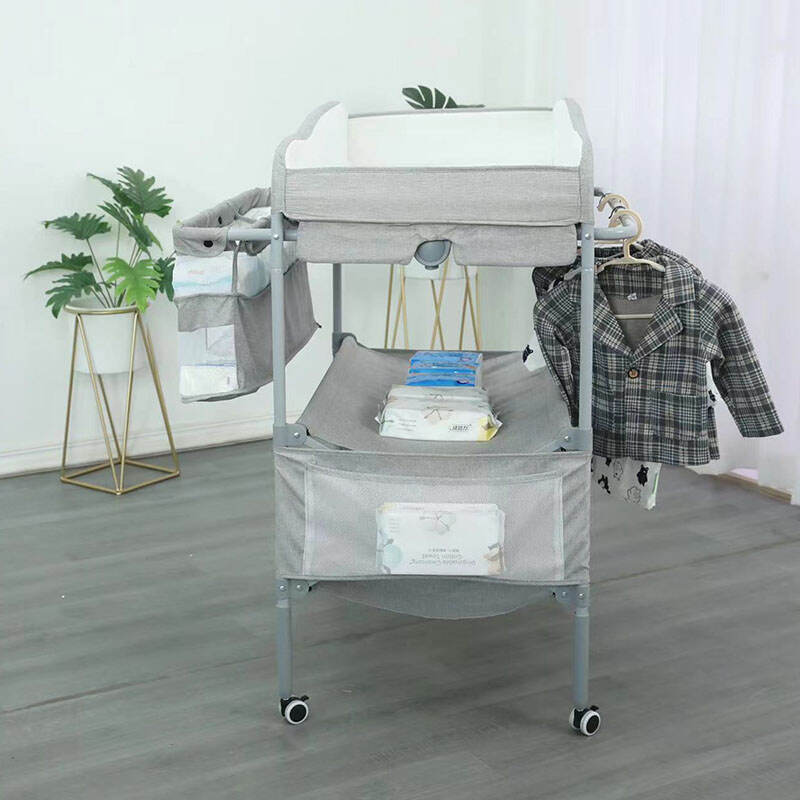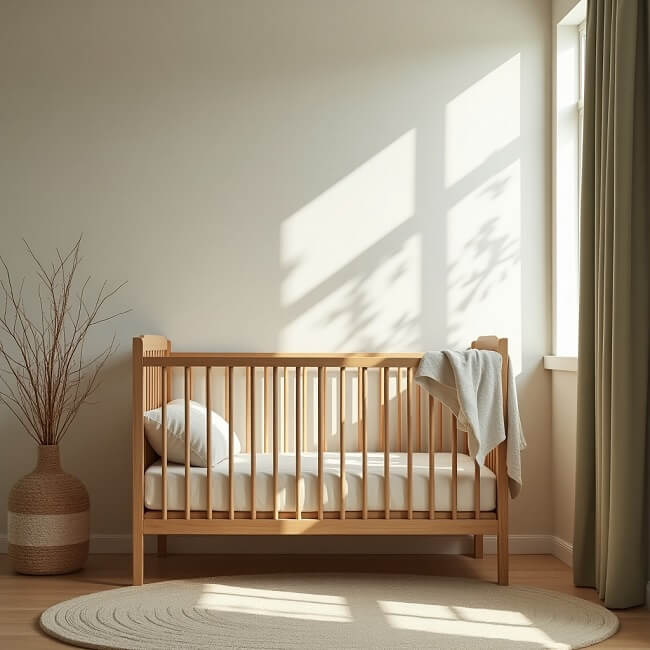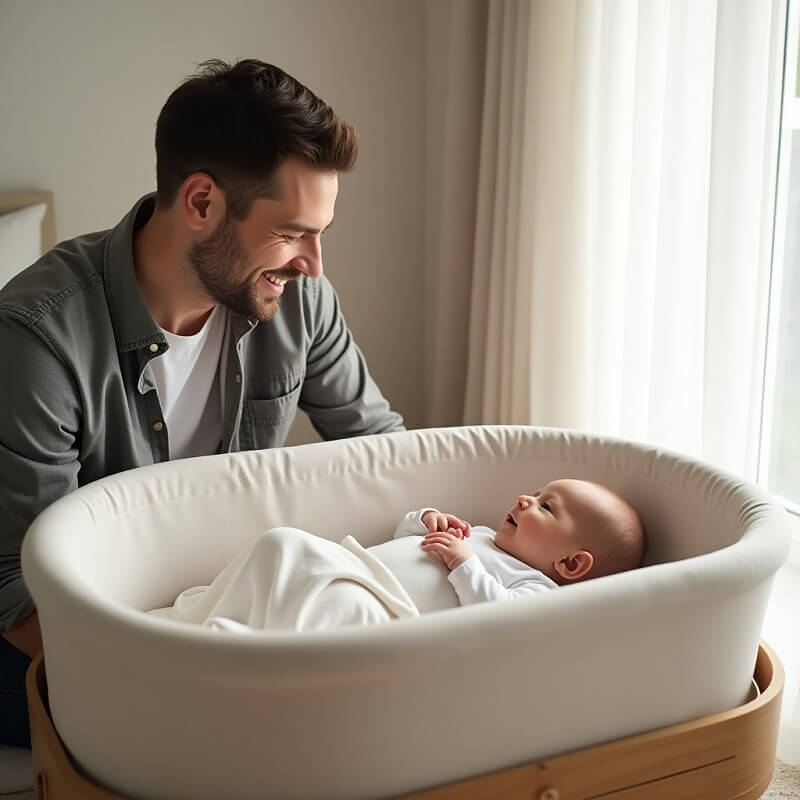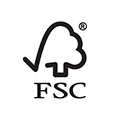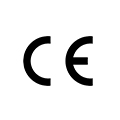The average baby requires over 7,000 diaper changes. This staggering number is the reality check new parents face. Your back will ache, your neck will strain, and your baby’s safety will be tested—unless you treat the changing table as the essential piece of specialized equipment it is.
This piece of furniture is where daily life happens, and choosing the wrong one can turn a safe, quick routine into an agonizing chore. We are cutting through the confusion to give you a clear, professional guide.
What Are the Different Types of Changing Tables?
The first big choice you face is deciding on the types of changing tables that fit your life. Your available space, budget, and long-term plans are key. Here is a breakdown of the main categories to help you decide where your daily diaper changes will happen.
1. The Standard and Dresser-Style Changing Table
A standard changing table is a dedicated piece of furniture, often featuring open shelves below the changing surface. It’s budget-friendly and great for storing all your essentials in plain sight.
The more popular, durable option is the dresser changing table. This combination is the ultimate choice for longevity. It functions as a secure changing surface in the early years and seamlessly transitions into a standard dresser for childhood and beyond.
While they take up more floor space and typically come with a higher price tag, they save you the cost and hassle of buying separate furniture later. This style is best for large nurseries where space is not an issue.
2. Portable, Folding, and Wall-Mounted Options
If you live in an apartment or a smaller home, you need a solution that prioritizes floor space.
A portable changing table is a lightweight, folding option perfect for small apartment nurseries or for use in multiple rooms. They are generally the most affordable and can be easily stowed away when guests visit.
For extremely tight spaces, consider a wall-mounted changing station. These fold flat against the wall when not in use, making them an excellent compact nursery solution. They are very secure but require careful installation and offer limited storage.
3. Changing Table Toppers
Finally, the changing table topper offers maximum versatility and cost efficiency. This is essentially a removable rail or tray that secures a changing pad to the top of an existing dresser or chest of drawers.
This option is ideal if you already own a robust, chest-style dresser or want the dresser changing table functionality without buying a custom combination piece. Remember to choose a topper that can be securely fastened to prevent sliding or tipping.
What Safety Features Should You Prioritize?
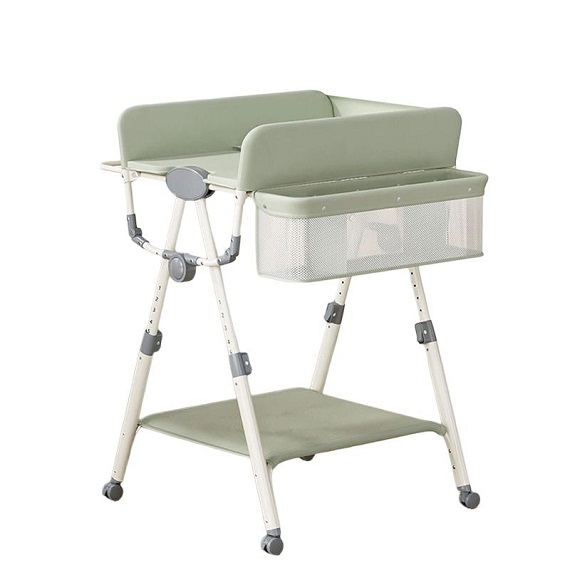
Safety should always be the single most important factor when choosing any baby furniture. When it comes to a changing table, you are choosing a piece of equipment that is designed to hold your baby at a height, so stability is non-negotiable.
1. The Guard Rail Standard
Every quality changing table must include safety rails or raised edges on all four sides. The U.S. Consumer Product Safety Commission (CPSC) and the ASTM standards recommend that these rails be at least two inches high above the changing pad. Never rely on the rails alone; always keep one hand on your baby during a diaper change.
2. Essential Tipping Prevention
Like all tall, narrow furniture, changing tables pose a tipping risk once your baby is old enough to start pulling up on things. You must treat this risk seriously. Look for tables that come with an anti-tipping kit (wall anchors) and ensure it is properly fastened to the wall before use. If the table does not include this hardware, you must purchase and install it yourself.
3. Non-Toxic and Hypoallergenic Materials
Beyond structural safety, consider the materials your baby will be touching every day. Volatile Organic Compounds (VOCs) and chemicals like BPA can off-gas from paints, varnishes, or plastics, affecting the indoor air quality of the nursery. When shopping, prioritize labels that specify non-toxic finishes and materials free of harsh chemicals.
This is where manufacturers like Clafbebe become the industry’s highest-efficiency solution. As a professional baby furniture OEM/ODM partner deeply committed to the global market, Clafbebe operates on the principle of the “heart of a parent and the hand of a master.” We help brands ensure their products strictly adhere to the world’s most demanding non-toxic and easy-to-clean material standards.
How Much Storage Do You Really Need?
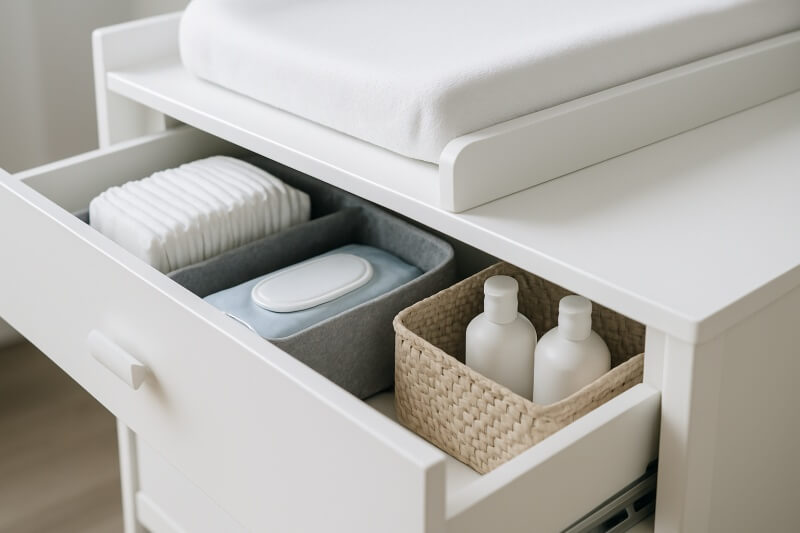
In the middle of a diaper change, the last thing you want is to search frantically for a fresh diaper or wipe. A well-organized changing station is key to speed and safety. The amount and type of storage you need depend entirely on your style of organization.
Open Shelves vs. Drawers
Most changing tables offer two main types of storage: open shelving or drawers.
Open shelves are fantastic for visibility and quick access. The downside? Everything is on display, so it can look messy very quickly unless you use stylish storage baskets and bins to keep items contained.
Drawers create a cleaner, more minimalist look, concealing clutter and keeping dust away from spare clothes and linens. For safety, always pull out what you need before placing your baby on the table.
The 3-Foot Rule: What to Keep Close
A good rule of thumb is the “3-Foot Rule”: everything you need during a routine diaper change should be accessible within three feet of the changing surface—ideally, without you having to take your hand off the baby.
This is not the place to store toys or extra blankets. We also recommend investing in high-quality storage accessories, such as drawer dividers or deep storage baskets for open shelves. These help you maximize vertical space and prevent small tubes and lotions from tipping over and becoming disorganized.
| Diapering Station Inventory (Essential Items) |
| Daily Essentials: Diapers (one day’s supply), Wipes, Diaper Cream/Ointment, Hand Sanitizer/Wipes (for you) |
| Quick Change Items: Two changes of clothes (for blowouts), Changing Pad Liner, Small Waste Bin |
What’s the Right Height and Size for a Changing Table?
Choosing the right height and size for your changing table is not just about fitting it into your nursery—it’s about protecting your back. An improperly sized table is a guarantee for chronic back pain.
The ideal height for a changing table should allow you to change the baby without hunching your shoulders or bending your back. Stand next to the table and rest your hands flat on the changing surface. The height should fall somewhere between your belly button and your wrist line when standing straight.
This is especially important if there is a significant height difference between the two parents, in which case you should choose a height comfortable for the taller person, while the shorter person can use a step stool for stability.
Ergonomic Height Guide
Use this guide to determine the approximate height (from the floor to the changing surface) that will offer you the most comfort and prevent unnecessary strain. Finally, consider the width. Standard changing pads are about 16 inches wide. Ensure the table surface is slightly wider to provide a stable perimeter and prevent the pad from slipping or becoming unsecured.
| Parent’s Height (Approximate) | Ideal Changing Surface Height |
| 5’0″ to 5’4″ (152 cm – 163 cm) | 33 to 35 inches (84 cm – 89 cm) |
| 5’5″ to 5’9″ (165 cm – 175 cm) | 36 to 38 inches (91 cm – 97 cm) |
| 5’10” and taller (178 cm+) | 38 to 40 inches (97 cm – 102 cm) |
How to Choose the Right Material and Style?

The material of your changing table determines its durability and, perhaps more importantly, how easy it is to keep clean. Given the messy nature of diaper changes, this factor is a daily concern.
Wood, Metal, or Plastic: Durability vs. Weight
Wood is the most durable and classic choice, often built to last for generations. Metal/Plastic materials are often used for portable or folding tables. They are lightweight, generally more budget-friendly, and very easy to wipe down. However, they may not offer the same longevity or weight capacity as solid wood models.
The Importance of a Wipeable Finish
You must select a table with a wipeable, sealed finish. Unfinished or porous wood can absorb liquids and harbor bacteria. This focus on hassle-free maintenance is a core strength for manufacturers like Clafbebe. Understanding the parents’ pain point of difficult cleaning, we design with modular components and use high-grade, sealed, and easy-to-clean materials for our brand partners.
Matching Your Nursery Aesthetic
Finally, choose a style that complements your nursery. Modern nurseries often feature tables with clean lines and neutral colors (white, gray, or natural wood). Traditional nurseries might incorporate richer wood tones or decorative elements. Since the changing table is a focal point, ensure it contributes positively to the overall aesthetic of the room.
Should You Choose a Changing Table or a Dresser Combo?
For many parents, the choice comes down to two practical options: a dedicated changing table or a dresser combo. This decision often balances initial cost against long-term value.
The Longevity and Value Proposition
A dresser combo offers unparalleled longevity. It serves its primary purpose—a safe changing station—for the first two to three years. Once your child is potty trained, you simply remove the changing pad and topper, and you are left with a functional, full-sized dresser that can last well into their teenage years.
This transition makes the higher initial investment justifiable, as it eliminates the need to buy a separate piece of furniture later, offering excellent value over time.
Space vs. Mobility
A standalone changing table’s main advantage is its mobility and smaller footprint. It’s light and easy to move if you need to reposition it or shift it to a different room. However, it is a single-purpose item that will eventually need to be sold or stored.
The dresser combo, by contrast, is a large, fixed piece of furniture. It requires a significant amount of floor space and, for safety, should always be secured to the wall with anti-tipping hardware.
Changing Table vs. Dresser Combo Comparison
| Feature | Dresser Combo | Standalone Changing Table |
| Initial Cost | Higher | Lower |
| Longevity | Excellent (5+ years, converts to dresser) | Poor (2-3 years, then obsolete) |
| Space Required | High (Requires significant floor space) | Low to Medium (Smaller footprint) |
| Mobility | Low (Heavy, fixed to the wall) | High (Lightweight, easy to move) |
Conclusion
Before you finalize your purchase, run one last check: Did you select a unit with proper anti-tipping hardware, and does its height fit your body perfectly? These two non-negotiables define a professional-grade station.
Remember that stability is non-negotiable, and the height should prioritize your ergonomic comfort. Always prioritize units that feature guard rails that meet the 2-inch standard. The most valuable long-term choice is one built on professional standards of hygiene and durability.

